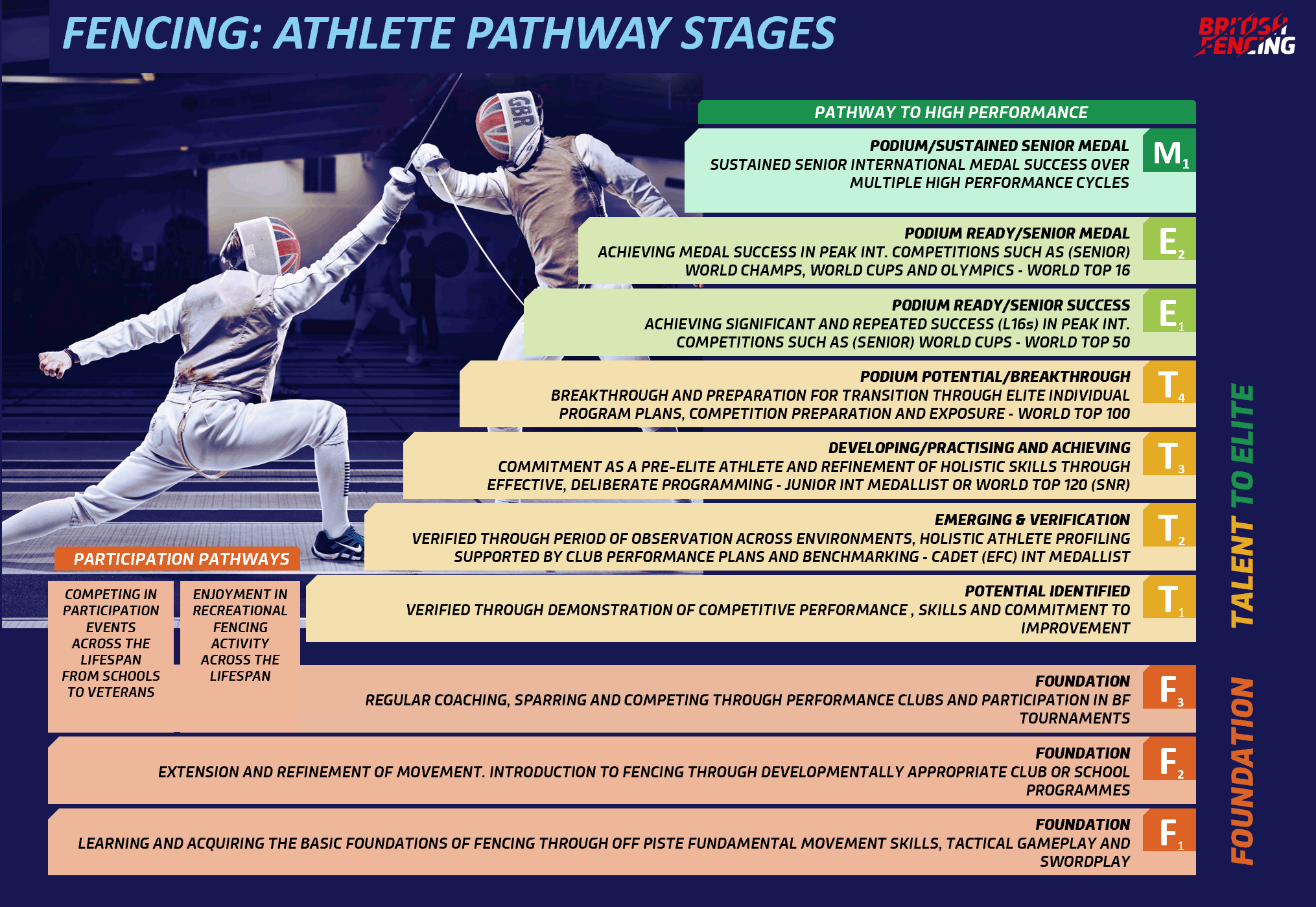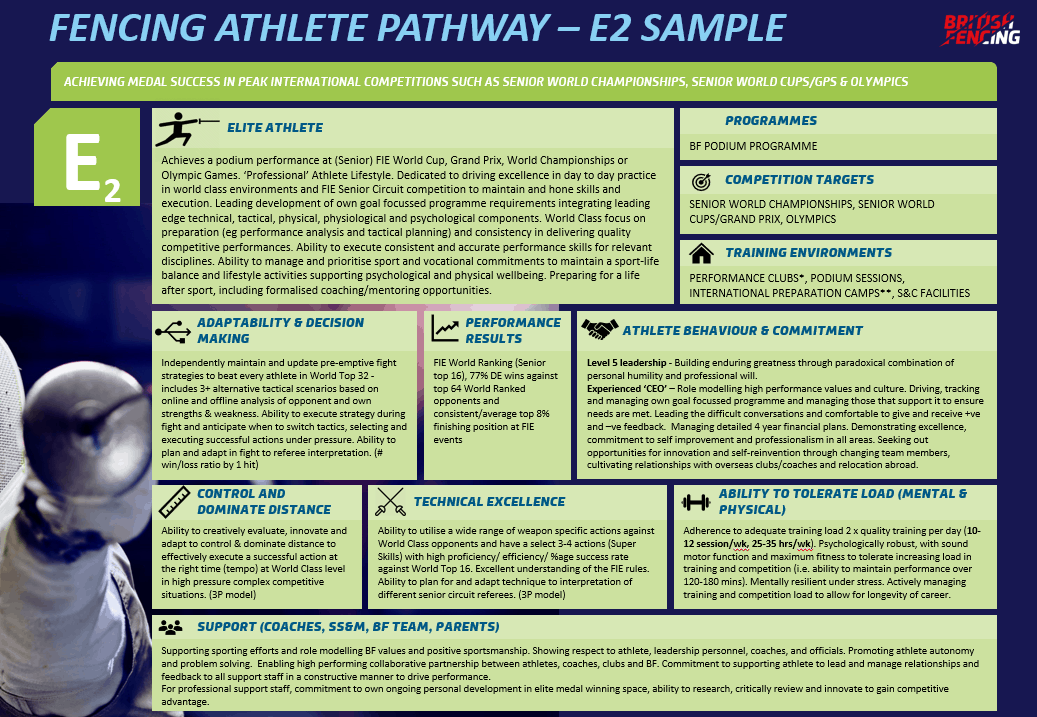

The Athlete Pathway Stages are based on the FTEM Framework.
The Performance Pathway Stages are those from T1 to M1 which describe the journey from Pre-Elite (T1 to T3), to Breakthrough Elite (T4) to Elite (E1, E2) and ultimately Mastery (M1).
T1 – Potential Identified – Verified through demonstration of competitive performance, skills and commitment to improvement. Domestic Ranking (Cadet/Junior/Senior) Top 15.
T2 – Emerging and Verification – Verified through period of observation across environments, holistic athlete profiling supported by club performance plans and benchmarking – Cadet International Medallist
T3 – Developing/Practising and Achieving – Commitment as a Pre-Elite Athlete and refinement of holistic skills through effective, deliberate programming – Junior International Medallist or Senior World Ranked 120
T4 – Podium Potential/Breakthrough – Breakthrough and preparation for transition through elite individual program plans, competition preparation and exposure – Senior World Ranked Top 100
E1 – Podium Ready/Senior Success – Achieving significant and repeated success in peak international competitions such as Senior Grand Prix/World Cups – Senior World Ranked Top 50
E2 – Podium Ready/Senior Medal Achieving medal success in peak international competitions such as Olympics, Senior World Champs, Grand Prix/World Cups – Senior World Ranked Top 16
M1 – Podium/Sustained Medal – Sustained Senior International medal success over multiple high performance cycles

Each stage is defined using a number of Pathway Stage Components to describe the expectations of an athlete in that stage.
For a full description of each of these components click here: Pathway Stage Components
It is important to note that in aligning athletes to stages:
Stage Description – T1-E2 Click Here

Return to the Pathway Zone to find out more about the Athlete Development Pathway.
